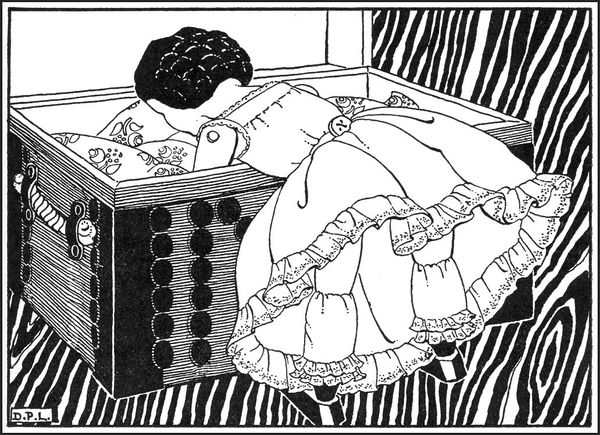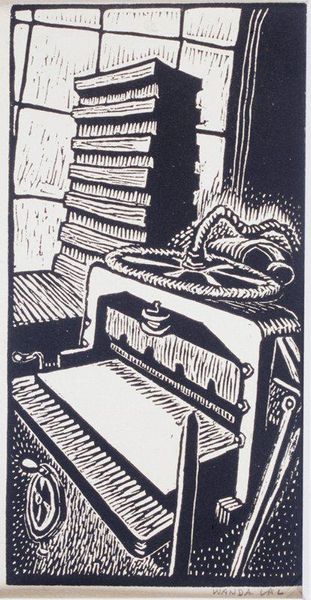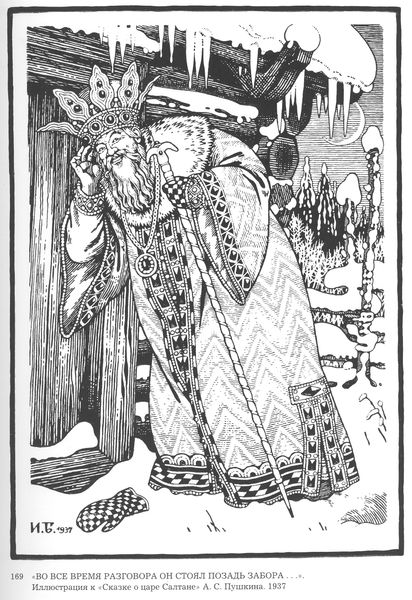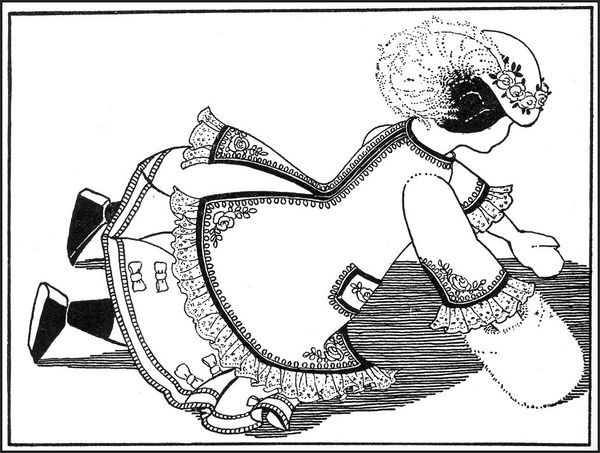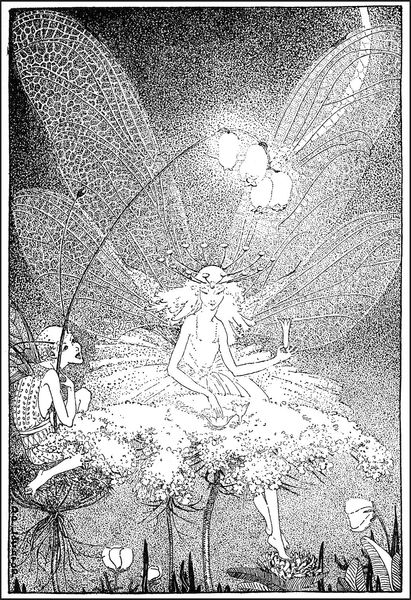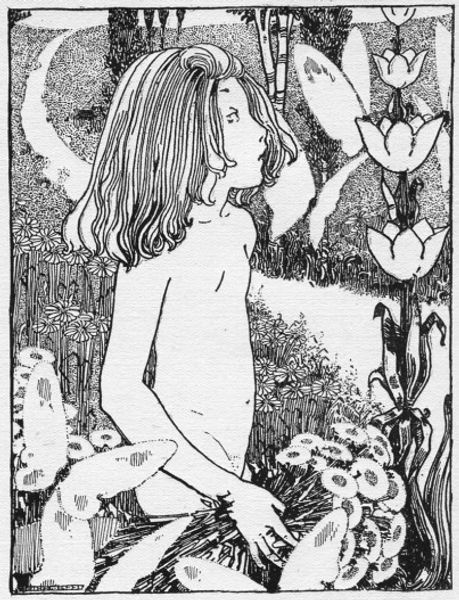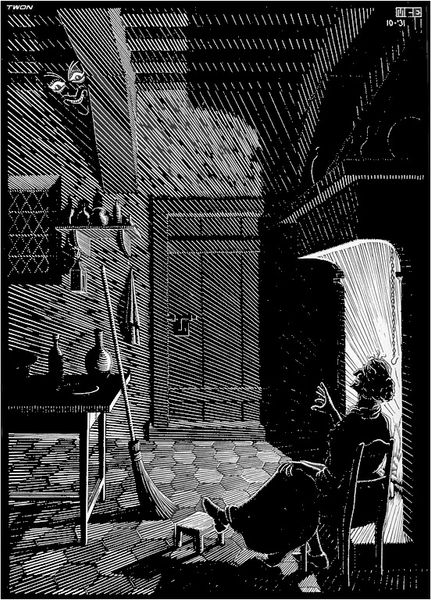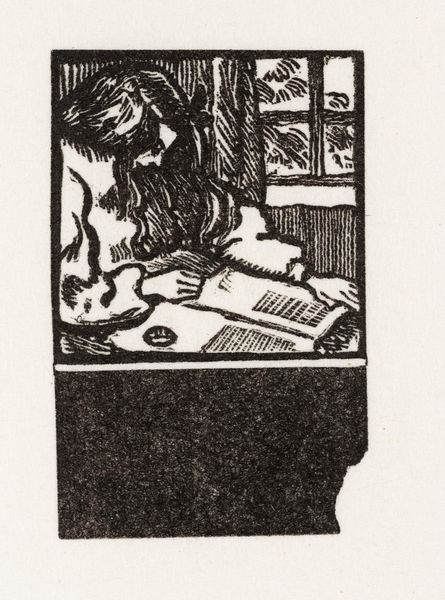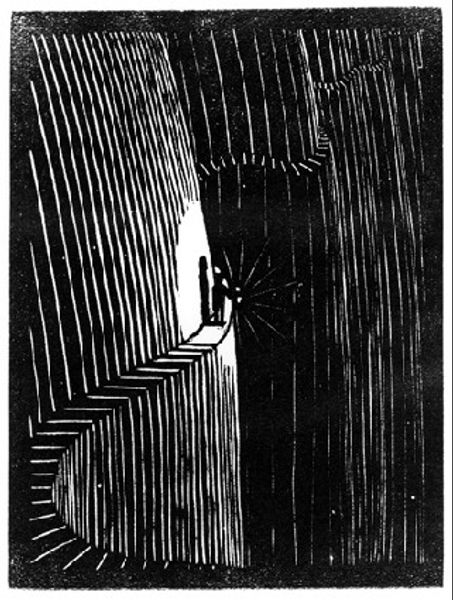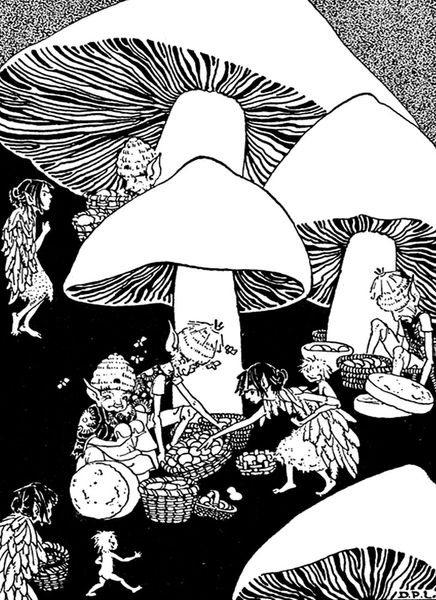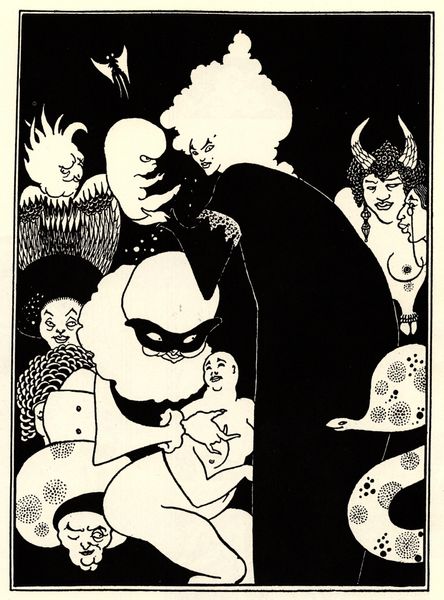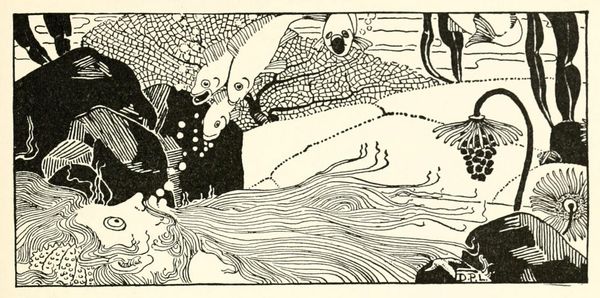
drawing, ink
#
drawing
#
narrative-art
#
ink
#
folk-art
Copyright: Dorothy Lathrop,Fair Use
Editor: Look at the contrast in this 1929 ink drawing by Dorothy Lathrop, titled *HITTY by Rachel Field 4*. It feels both cozy and intensely graphic, doesn't it? Curator: Yes, there's a deliberate handmade quality, right? Lathrop’s labor is evident in every hatched line—consider the crosshatching she used to create texture. Also the material limitations imposed a certain level of constraint. Editor: Definitely. And that material sensibility reinforces its narrative power. We see a young child, maybe a girl, immersed in a large book. On its pages we get an angel on one page and an image of Jonah and the Whale. Those Bible narratives position children’s role within moral and cultural landscapes of early-twentieth-century America. Curator: Notice how Lathrop, an illustrator who won the first Caldecott Medal for excellence in American picture books, has literally placed her audience at the heart of literary consumption. It invites reflections on how illustrations work as conveyors of cultural ideology in domestic spaces. Editor: It's also intriguing how Lathrop depicts these stories simultaneously. It’s about intergenerational stories in relation to individual identity; the domestic sphere—with its folk-art patterned rug—as the setting for exploring existential themes through art and storytelling. Curator: Precisely. It is about making reading look almost palpable, presenting textual encounter in very sensorial ways. Even the buttons on her dress seem handmade! Editor: The child’s centrality—and the illustration’s directness—seem an interesting challenge of artistic categories, questioning what separates "art" and “craft.” Her commitment to handmade artistry blurs the lines between what can be deemed "high" and "low" forms. Curator: Right, it elevates illustration to a thoughtful means for reflecting on both making, looking, and engaging critically within literature. A deliberate emphasis on the artist's labor, even. Editor: So much richer to see that intersection between story, image, and maker, don’t you think? Curator: Absolutely. Makes you want to read that big book, doesn’t it?
Comments
No comments
Be the first to comment and join the conversation on the ultimate creative platform.
